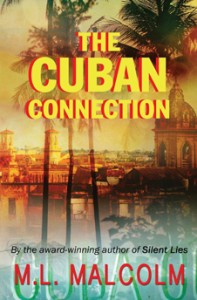I love James Bond. I’d always imagined that Ian Fleming based some of his famous spy’s derring-do on his own wartime exploits, so I was terribly disappointed to learn that during World War II Fleming was actually a spy supervisor. As personal assistant to the British Director of Naval Intelligence, he saw combat only once, and I mean that quite literally; he and his boss watched from afar as Canadian and British troops carried out an assault at Dieppe that was designed to test the strength of German defenses in northern France.
It was 1941, and unfortunately the German defenses were excellent.
Not that Fleming’s contributions weren’t valuable, but he was a thinker and a planner, not a doer. So while researching the lives of World War II spies for my next novel, Heart of Deception, I was intrigued to discover that after the war Fleming allegedly had an affair with one of Britain’s most effective undercover operatives: Krystyna Skarbek, more widely known by her British alias, Christine Granville.
The daughter of a Polish count and wife of a diplomat, Christine and her husband came to London after the Nazis invaded their country. The British wartime espionage organization, the Special Operations Executive, was just gearing up, and Christine volunteered her services. She offered to travel to Budapest and go from there to Poland by crossing over the Tatra Mountains. On skis. Skeptical at first, the SOE eventually agreed to support her plan. Christine was an excellent skier; accompanied by one former member of the Polish Olympic ski team, she made it over the mountains and began engaging in undercover reconnaissance and recruitment.
During her career as a spy she evaded capture by the Germans multiple times. Once she pretended to have tuberculosis by biting her tongue so hard that she “coughed up” blood; another time she was stopped by two German soldiers at a border crossing and lifted her arms to reveal two live grenades, pins already pulled. The Germans fled; Christine pitched the grenades and dashed across the border.
Among other accomplishments she saved the life of Francis Cammaerts, the man who headed up the behind-the-lines S.O.E operations in southern France. In 1944 Cammaerts and two of his colleagues were captured and imprisoned by the Gestapo. Christine talked her way into the jail by pretending to be Cammaerts’ wife, then convinced the German officer in charge that she was the niece of the British Field Marshall Bernard Montgomery; that the British were only hours away; and that the commandant could either wait to be slaughtered or hand over Cammaerts in exchange for a large bribe and make a run for it. He accepted her invitation.
Men were quite simply mesmerized by Christine Granville; as one ardent admirer explained, “Even though she was very quiet, there was something about her that put other women in the shade.” And like James Bond, fidelity was never her strong suit.
Fleming supposedly told a close friend that Christine “literally shone with all the qualities and splendors of a fictitious character,” and he eventually used her as one; it’s now generally assumed that Christine was Fleming’s inspiration for the first Bond girl, Vesper Lynd. “Vesperale” was Christine’s nickname when she was a child, because (just like Vesper Lynd) she was born during an evening thunderstorm. Moreover, Fleming’s description of Vesper is similar to that of Christine, both physically (dark hair, wide mouth, no make-up) and in terms of her personality (“She was thoughtful and full of consideration without being slavish and without compromising her arrogant spirit…She would surrender herself avidly, he thought, and greedily enjoy all the intimacies of the bed without ever allowing herself to be possessed.” *)
But while Fleming always maintained that Bond was a “compound of all the secret agents and commando types” he’d encountered during the war, I think that composite also included one spy he met after the war. Given what I’ve learned about Christine Granville, it’s clear to me that she was more than just the inspiration for the first Bond girl; Fleming also incorporated her abilities and attributes into the actual James Bond character.
Vera Atkins, who was the second-in-command of the SOE section responsible for helping the French resistance, described Christine as “a woman of quite unusual character. She was very brave, very attractive, but a loner and a law unto herself.” **
Sound like any other superspy you know?
*From Ian Fleming’s first James Bond novel, Casino Royale.
**From Christine: SOE Agent and Churchill’s Favourite Spy, by Madeleine Masson.
Originally posted on Hist-Fic Chick at http://histficchick.com/2010/09/the-real-james-bond-was-a-woman-seriously-a-guest-post-by-m-l-malcolm-plus-giveaway/?utm_source=feedburner&utm_medium=feed&utm_campaign=Feed:+HistFicChick+(Hist-Fic+Chick)

